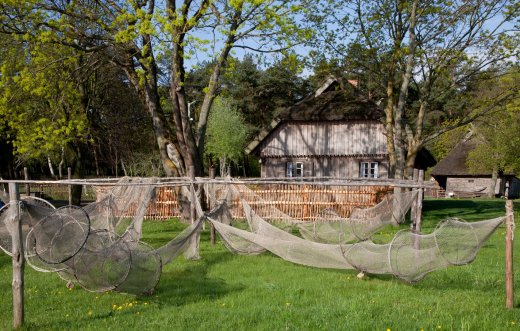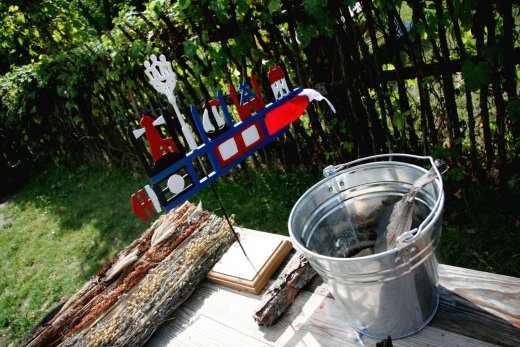Ethnographic fisherman’s farmstead

What does a fisherman need a dipper for? A fisherman fishing in the Curonian Lagoon needed not only a boat of the kurėnas type, the sails and nets, but... a dipper as well. The dipper was used to pour water on the sails so that wet sails should better catch wind.
The ethnographic fisherman’s farmstead was established in Kopgalis in 1979. The farmsteads of seaside fishermen living in the area of Šventoji and Palanga, built in the 19th or early 20th century, served as the prototype for the ethnographic farmstead.
There were not many buildings in those farmsteads; poorer fisherman would have 2 or 3 buildings in their farmsteads. The idea behind the ethnographic fisherman’s farmstead was to show all types of farm buildings and houses found in seaside farmsteads. The ethnographic farmstead represents a homestead complex of a well-to-do farmer, who was busy breeding animals, farming and fishing. The homestead complex consists of a living house, a cattle-shed, a granary, a bathhouse, a cellar, a curing-house, poles for drying fishing nets and fish.





